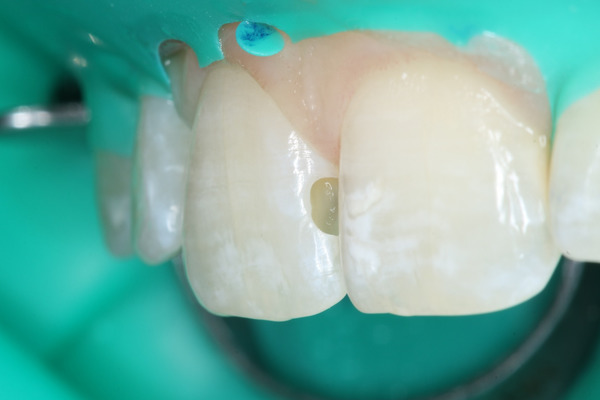
No, this is no longer caries, this is a cavity formed by a diamond bur, when all the affected tissues are removed.
Caries cannot be cured, it can only be suspended. Considering that from 93 to 99% of the adult population suffers from tooth decay, this is a pandemic.
There are a lot of diseases after which the body does not recover. It does not necessarily recover as much as after rabies, but it certainly does not return to its original state. Doctors call this "substitution" - partial restoration. The difference is that a borscht burn on the tongue is often restored without a trace, this is a complete restitution. But after falling on a nail, a scar remains on the skin forever - this is just an option "patched up as they could".
The teeth are getting worse. They cannot fully regenerate, as, for example, the skin does after injury, since living cells are inside them, and they are not able to overgrow a defect in hard tissue. If caries has begun, then he himself will never be cured, except for the very first stage of the stain, when it is just the beginning of demineralization. And here the doctor's task is not to close him up at random, but to fully restore the function. Now I'll tell you why not all fillings are equally useful, what needs to be done in terms of prevention at home, and what the doctor has.
And yet - why, for example, domestic animals have caries, but wild ones almost never do not.
It was better in the Paleolithic!

But our ancestors did not suffer from tooth decay! And they lived in peace. Not very long, but they died almost healthy. It was then in the Neolithic that troubles with agriculture and negative population growth began as crop failures. In the Paleolithic, we were proud hunter-gatherers. They collected mainly small mollusks, insects, mushrooms, not very high-calorie plants, and the like. Sometimes they would eat up their neighbors . This is all a low-carb diet. Contemporary researchIt is believed that a low-calorie diet, poor in low-molecular-weight carbohydrates, contributed to a low incidence of diabetes mellitus, cardiovascular diseases and, oddly enough, the same caries. This does not mean that if you eat your neighbor, there will be no tooth decay. This means that we now have unlimited access to flour.
If you pay attention to animals, then they almost do not suffer from caries. There are rodents in which the tooth grows all their lives and simply gradually grinds off, there are reptiles that grow new ones to replace the lost ones. But even among mammals, carious lesions in the wild are quite rare. Obviously, this is largely due to natural selection, which led to the ruthless extinction of all at least somewhat defective individuals. If you can't eat, they will eat you. This is a consequence of a diet of tough, unprocessed foods. Monkeys did not come up with toothbrushes, but their teeth were cleaned with harsh food. This is called self-cleaning of the tooth enamel.
In Homo sapiens, with the advent of agriculture, this mechanism is largely broken. A sweet bun quickly replenishes calories, then a mixture of its residues and saliva adheres perfectly to the teeth, and this does not help to remove bacterial plaque at all. Rather, on the contrary, it is fed with carbohydrates. Moreover, sugar as such is not too dangerous. Yes, it is unpleasant for the pancreas, provokes obesity, but in the end it is very quickly washed off with saliva. But buns and cookies are a real problem. They stay with us for long hours, creating a favorable environment for bacteria.
Dentists also meet patients who diligently grind all their food. Carrot - grated, apple - puree in a blender. Etc. Don't do that. Better to crunch a carrot at work once again after lunch. This will completely replace additional brushing of your teeth. Although, of course, brushing your teeth twice a day is still necessary due to biologically not the most successful diet. A good hygienist will definitely advise you to rinse your mouth with water after all meals.
Caries is an infectious disease
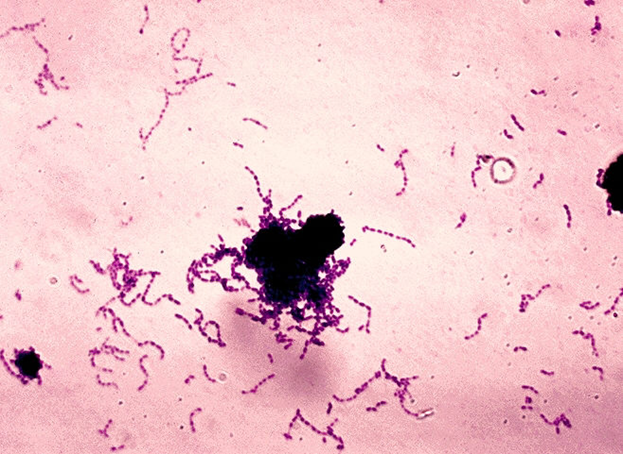
Streptococcus mutans. Someone who eats your teeth at night. During the day he also eats
Caries does not develop by itself. First of all, this is an imbalance in the balance of remineralization and demineralization. Saliva is responsible for remineralization. It returns the lost calcium ions back to the enamel, contributing to its restoration. Plus, it contains a large amount of hydrocarbonates, due to which it is an alkaline buffer that neutralizes acids.
Acids are the result of the vital activity of bacteria. They do not gnaw the enamel, they eat the remains of a bun from it and secrete acid nearby. It is acid that destroys teeth. That is, bacteria are responsible for demineralization, which eat up the remains of carbohydrate food and produce organic acids. The key microorganism here is Streptococcus mutans. It is a natural saprophyte, you cannot get rid of it, it is populated immediately after the birth of the child. As long as all the systems in the balance, problems do not arise. But, if calcium in saliva becomes too little or the strain mutates into a particularly voracious and aggressive one, calcium will begin to transform into soluble forms under the action of organic acids.
What is especially frustrating is that people can wonderfully exchange such aggressive strains, for example, during a kiss. Therefore, a single family member with problem teeth potentially increases the risks for everyone else simply by using the same utensils. In fact, one carious tooth is a threat to the entire family budget. The stages of exacerbations are especially dangerous: a guy with rotten teeth - wait for an extraordinary trip to the dentist.
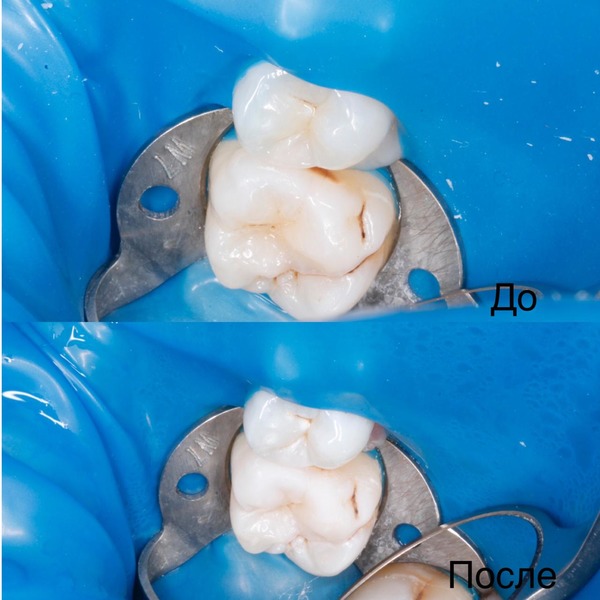
Caries at the stage of stains
As a result, a dull, dull stain will initially appear on the enamel. As a result, this will lead to the exposure of the organic matrix of the enamel. Healthy enamel is a natural composite formed by enameloblasts during the period of tooth formation. Long chains of structural proteins form the organic matrix, while hydroxyapatite and fluorapatite form the solid crystalline part. In general, it turns out something like reinforced concrete, which demonstrates its outstanding qualities only if all its components are in order.
The problem is that as soon as bacteria dissolve the inorganic part with their acids, the protein scaffold becomes the same food for the rest of the zoo, living in the oral cavity.

Further, the process of formation of a carious cavity goes on continuously and will not stop without medical help.The deeper the microflora penetrates, the lower the level of mineralization. To put it simply, fabrics become looser and more moist. Therefore, almost always a carious cavity has the shape of a reverse pyramid. Slim visible entrance and expanding cavity. Surely you have often heard stories in the spirit of "came with a small hole, and they ripped my half-teeth out, villains." This is not a villainous doctor, but the course of the disease is like that. Sometimes it leads to the phenomenon of eggshell, when only little edible enamel remains, and all the underlying dentin is simply turned into loose detritus by bacteria.
There are, of course, formal categories like "interrupted caries", but this is rather a very chronic variant of caries, which will still inevitably lead to tooth decay. The only way to cure a patient is to remove the affected tissues, ensure sterility and replace them with a functional analogue - a filling material.
What to do to reduce risks
You need to remove one of the three:
- Teeth.
- I'm going.
- Bacteria.
The correct answer is teeth. But of course, it's not worth removing teeth from a person just like that. The only exception is probably wisdom teeth. If a tooth is functionally inoperative and grows crookedly, then it will only be a source of problems. You won't have caries on your eighth tooth if you don't. Of course, this solution is not suitable for other teeth. We try to preserve every tooth that is valuable either for chewing or as a support for some kind of prosthesis - this is important, because when the teeth are removed, sensation disappears, and this is associated with the early development of dementia.
You can optimize your diet. Try to eliminate sweet rolls, cookies, and other sticky things. At the very least, get into the habit of brushing your teeth after this type of food. Or at least rinse your mouth with water. In general, good hygiene is probably the main part of success. Well, acidic drinks are also not a gift for enamel. Four out of five dentists do not recommend hockey and cola.
Bacteria can also be fought. In very severe cases, antibacterial pastes and preparations are used. But this cannot be used every day, especially without a doctor's prescription, since instead of improving the oral cavity, you can grow yourself a mushroom kingdom from yeast-like fungi of the genus Candida. But with lesions of the gums and periodontal disease, antibiotic therapy is often simply indispensable. But here the duration of the courses and the drugs should be prescribed by the doctor. Normally, your natural microbiome should still live in your oral cavity. This is normal. The main thing is that he does not become too aggressive and does not multiply beyond measure.
Particular attention should be paid to hygiene for those who wear braces. The braces themselves are fixed with a special compound, which does not differ much from the filling material. Therefore, everything will be clean under the braces. But a point of accumulation of plaque is created around. After removing the braces, things sometimes look pretty sad. Similar recommendations for enhanced hygiene and the use of electric toothbrushes and irrigators are for people with orthopedic structures in the oral cavity.
We make a diagnosis

See white areas on the enamel? But no, this is not caries, but a congenital defect of the enamel - hypoplasia. The enamel is chaotic and looks dull. An experienced doctor will distinguish this from caries in the stain stage.
Caries, unfortunately, often does not hurt. The pain provokes a reaction from the pulp odontoblasts. These are cells with long tails that stretch through the dentin. If caries has eaten the tooth tissue up to the dentin-enamel border, the tooth begins to react to cold, sour and other stimuli. Unfortunately, patients are often found very patient or with reduced sensitivity. As a result, the tooth pulp often dies without much pain. The infection goes on, colonizing first the cavity of the tooth, and then going beyond it through the apex of the root. So caries becomes pulpitis and periodontitis. Therefore, it is so important to catch the disease at the initial stage.
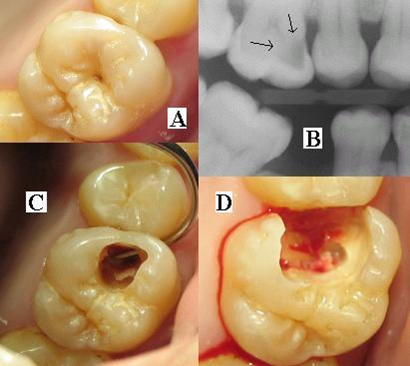
A - nothing really visible, a thin entrance hole on the contact surface.
B - large cavity on x-ray.
C - opened cavity. Deep caries, loose decaying dentin is visible.
D - cavity after preparation
Very often, the opening is so small that caries at the initial stage is not clearly visible. An experienced doctor will be able to suspect something was wrong when using a bunch of additional funds.
- You can look at the glow of enamel in ultraviolet light at a wavelength of 365 nm. Demineralized tissues glow differently. The study of the tooth in the light with a light curing lamp can also often help to see internal defects.
- You can try to paint a suspicious area. Demineralization is colored, but, for example, a defect in the enamel filling is not. This is how fluorosis and enamel hypoplasia are distinguished from caries.
- And, of course, you can take a targeted X-ray of a suspicious area.
There are other methods, such as electrodontometry, but they are very rarely used in the clinic and are rather needed for scientific work.
How to treat
Remineralization

Mouthguards with a healing composition for remineralization
If you come across a good doctor and he was able to identify caries at the stage of the stain - you are very lucky. As I said, this is the only reversible option that does not require the removal of the affected tooth tissue. In this case, you will be offered remineralizing therapy. In the clinic, the doctor will perform professional cleaning, removing even an invisible bacterial film and facilitating the transport of calcium from the preparation into the tooth enamel. Then you sit with a special compound on your teeth for a while. Alternatively, you can have a mouthguard made to wear overnight along with a remedy like GC Tooth Mousse.
Dissection. Access problems
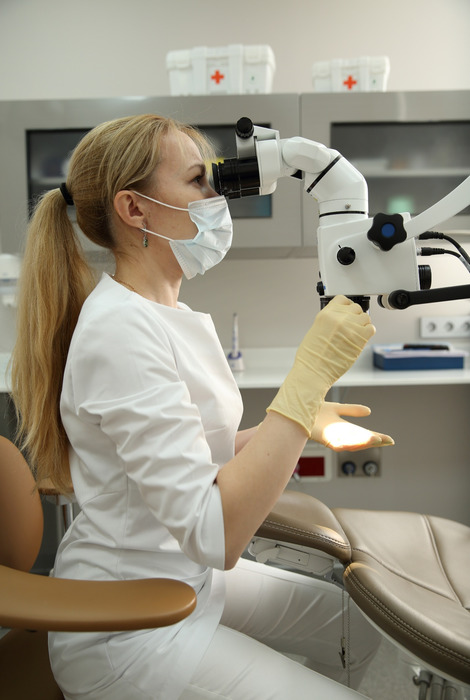
We perform most of the manipulations under a microscope. The doctor sees the smallest details and at the same time saves everything in the form of photographs for the archive. This is important for repeated calls.
If there is a carious cavity, then there are no further options - you have to remove the affected tissues with diamond and hard-alloy burs in order to then replace them with filling material. The question is how to get to the right fabrics. Neurosurgeons have similar problems when, in order to remove a brain tumor, it is necessary to destroy part of healthy tissue in order to get to it. Fortunately, we do not have such big risks and consequences, but it is not at all cool to cut down a large amount of healthy tissue to get to the desired area.
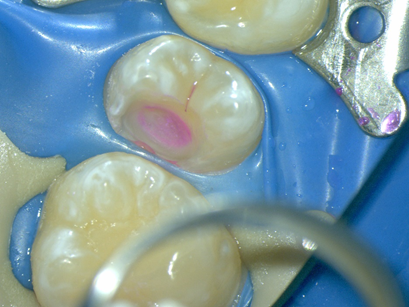
We use a caries marker to control tissue infection. If the tissue does not stain and squeaks during probing, it is healthy. Otherwise, we continue to carefully cut further.
However, the dentist must remove all diseased tissue in its entirety. You cannot leave a little and try to treat it with antiseptics in order to preserve more dentin and enamel. Dentin is extremely porous, and bacteria are completely indifferent to these attempts to spray something from above. That is, the doctor must definitely remove absolutely everything that is infected, and then restore what is left. Otherwise, bacteria will multiply directly under the filling further and the tooth will still collapse.
One of the most common options for localizing a carious cavity is between the teeth. Moreover, it affects both teeth at the same time on the contact surface. Most often it is impossible to get close from the side of the contact surface - there will not be enough space. And there are two options.

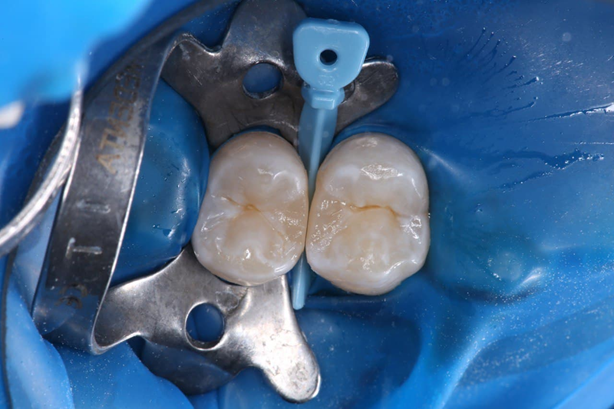
The classic form of access. There was a fairly large defect and there were no indications for the tunneling method. The second picture shows the patient after treatment.
The classical method involves starting the preparation from the side of the chewing surface of the tooth and moving vertically towards the defect. It's good, wide and easy access. The review is normal, it is possible to treat the walls of the cavity with an antiseptic and the necessary primers for the adhesion of the filling. We ourselves use it if the volume of the cavity is large. Of the minuses - you have to remove more healthy tissue. We also violate the accuracy of the contact surface.
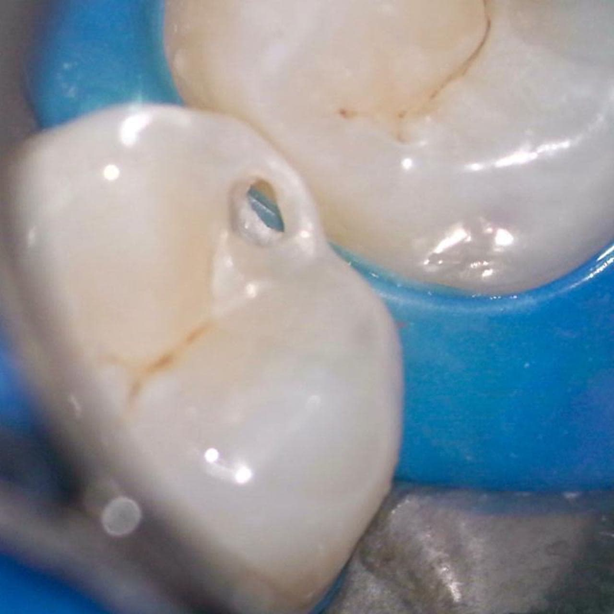
Tunnel access option while maintaining the top of the contact surface
After restoration


We have microscopes that allow more. Classic techniques are limited by the skill of the doctor and the field of vision. Thanks to the additional optics, we are often able to offer a more time-consuming but sparing version with tunnel preparation. We begin to dissect from the upper or lateral surface. At the same time, more hard tissue is retained. It is especially important to keep the contact surfaces to the maximum and the triangular fossa. These structures are essential for proper chewing. In the photo above, for example, food will definitely not clog, since we have left most of the contact enamel.
How to seal and how
If you paid attention, on all the pictures of the patients there is a rubber dam. This is a special membrane in which a hole is made for the tooth that we will be treating. Isolating the tooth from the mouth is very important. It is like an isolated surgical field during an operation. There is no need to introduce incomprehensible microflora mixed with saliva into a freshly prepared tooth. All standard filling protocols require saliva isolation. Cotton rolls are, of course, great, but very archaic and do not meet modern requirements. Long-term results are much better with a rubber dam, and the doctor is confident that he has closed a sterile cavity with a filling.
Photocomposites
The bulk of filling materials now are light-cured super-filled nanocomposites. They correspond as closely as possible in terms of thermal conductivity, hardness, color and other parameters to natural tooth tissues. But sometimes it makes sense to use other materials as well.
Glass ionomers
For example, glass ionomer cements. They are often mixed on a separate glass with a two-component spatula and cured without the need for a lamp within a few minutes. This is less convenient for the doctor, but they have their own advantages for certain cases. They better tolerate excess moisture, which makes it possible to use them in difficult cases of cervical caries. They also release fluoride throughout their entire service life, which reduces the risk of secondary caries.
Exotic
There are also more exotic options. For example, layer-by-layer filling of the cavity with micron gold foil on top of the cement at the bottom. Gold is a very soft metal and over time only improves the contact area between the filling and the enamel. I have seen this method several times on older Europeans. It looks very elegant, like a piece of jewelry. Probably, you need a professional deformation to see beauty in something like that)

Amalgams. Many are afraid of them because of mercury, but in a solid state they are absolutely safe and non-toxic. Moreover, modern devices mix a standard dose inside a standard two-chamber capsule, after which they give the already safe amalgam to the doctor for filling. They stand for decades, have a bactericidal effect, but are almost never used. There are several reasons. To begin with, they will take out your brain with checks that will require gluing the walls with linoleum in accordance with the regulations. In addition, the material itself is inconvenient to work with. It hardens very quickly, and all excess solid metal will have to be artistically cut out. This is not a photocomposite, where you can apply another stroke with a translucent layer with the expression on Michelangelo's face and aim for a long time. Well, the aesthetics are lame with thermal conductivity. Can be frustrating when drinking hot tea, for example.
Obsolete
There is also a whole class of obsolete materials that should not be used even in OMC. These are various types of zinc-phosphate and zinc-eugenol cements. They do not hold tightness well, are fragile, and quickly crumble. Only suitable for temporary filling. Remember the unforgettable eerie scent of clove oil? This is what they are. Zinc oxide is hand-mixed with clove eugenol. And also a nasty sweetish smell, a bit like acetone. It was ether, which was used to dry and degrease the cavity before filling with such cements. Now this is almost never used.
You then chew it
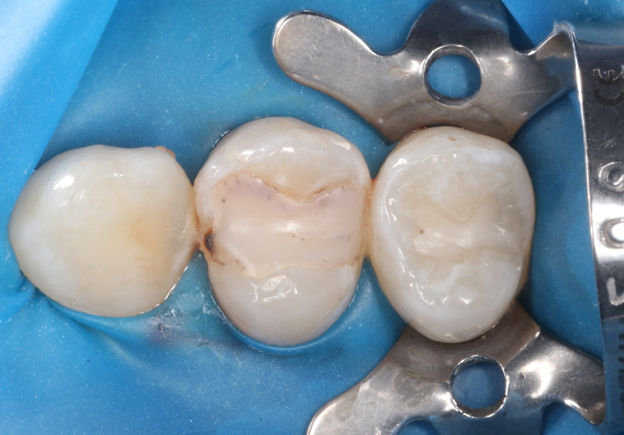
«, ». ,
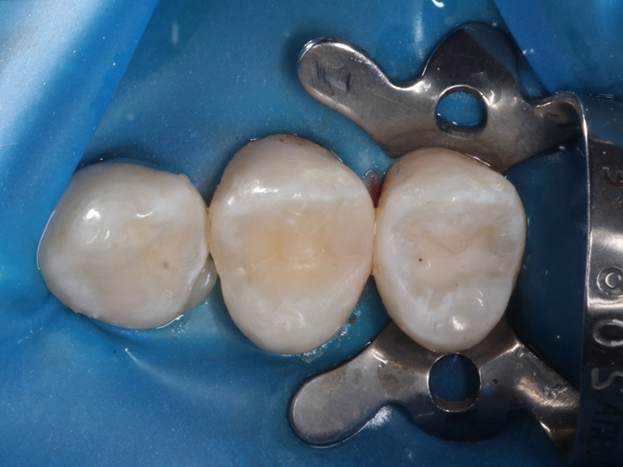
. .
A good dentist must have perfect knowledge of the anatomy of the tooth. It seems that it is enough to just close the "hole" and it will be good. Not. It is not for nothing that we constantly train and learn to be able to accurately restore the triangular fossa, all fissures, slopes of the tubercles and other anatomical features of the tooth. In a bad version, it is easiest for the dentist to put cement on the bottom, anoint it around and send it with the remaining bumps sticking out. It will look a lot like mountain peaks in the middle of a flat plain. But the chewing efficiency in this area will drop sharply. Yes, it will not interfere when biting. But it won't chew normally either, because instead of a sharp knife you got a blunt object filed down with a file. The contact area between antagonist teeth on different jaws has grown, and now you do not cut food with sharp contacts,and stupidly rub like an antelope in the savannah.
Well, don't forget about prevention. If you go to the dentist-hygienist every three to four times a year and replace old fillings in a timely manner, everything will be fine and you won't have to remove your tissues. Of course, all this does not negate good hygiene in your home. Here I would take a closer look at electric toothbrushes and, if necessary, irrigators.
PS If you get to our clinics, then say that you are from Habr, there will be a 5% discount.